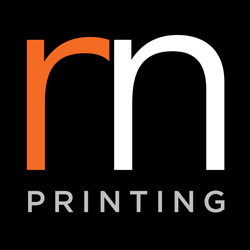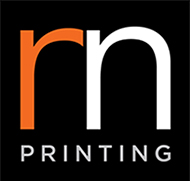“The visionary starts with a clean sheet of paper and re-imagines the world.” – Malcolm Gladwell
In the beginning, there was only black and white. Invented in the early 1400’s was the printing press. Offset printing followed in the 90’s, then came the digital printing…until there was just digital, or so you think.
Let’s talk about why print survived and still is a wise medium to utilize in the digital age.
1. It heightens the memory
The digital age never erased the value of printing. Schools did not eradicate the use of books, magazines, and newspapers in educational systems. And, it’s because years of research shows that the brain is more likely to remember what it reads on paper than on screen. Evidence from experiments indicate that “modern screens and e-readers fail to adequately recreate certain tactile experiences of reading on paper that many people miss and, more importantly, prevent people from navigating long texts in an intuitive and satisfying way”.
If companies start reaching out to their audiences with the use of print, they plant an impression which is good for publicity.
2. The medium invites focus/attention/attraction
According to psychological research, reading text on a screen gradually encourages the mind to skim. The brightness and radiation emitted from technology cause the eyes to strain faster compared to reading it on paper. This resistance of the eyes towards radiation is the often reason why your brain would push you to read faster
Print produces a totally different effect. Because print provides the visual stimulation and the sensual satisfaction of having to touch what one has seen, audiences are attracted to invest more time to read, explore and reflect on the material itself – savor the moment. Innovation in the print industry doesn’t just rely on sight and touch, but with all the senses except for taste. Nowadays, cards and papers are with scent. And, if you’re a greeting card enthusiast, you’ve probably heard of cards that play music when opened. Yes, that’s one of the most stunning innovations ever created in print.
3. It’s hipster – a type of marketing compared to all
Print’s ability to capture focus and attention is where beautiful things begin. When digital marketing is providing possible temptations to wander around what can be accessed in the tv or internet, print was providing readers the opportunity to channel the audiences’ cognition into a specific piece paper – into a distinct spectrum of ideas – and think. Print encourages the readers to explore and make the most of the piece that usually leads them to their brain processing things. And, this is where ideas and decisions happen. By narrowing the set offerings, sellers are sending the subliminal urgency to act and decide. And, the audience barely even know that, because they’re already hooked in.
This is the reason why print lives.
4. It provides material proof
Print connects audiences to its source. It gives them the feeling of holding a piece of the source and that adds value to the print. It appeals to emotions which is good if one is looking for ways to catch the audience’s attention.
Unlike what is presented in the webpages, print is loyal. It sticks to its owner. When you read an article, e-book, e-vite or even an advertisement online and you close the page, and it’s gone. You may access it again or you may not, you may be the only one who got that ad or not, but the second time you open is never the same. The little things that you cherish and call experiences remain in your head. But with print, it’s all there: the marks from your fingerprint as you held and flipped the pages on your way to another country, the stain from the coffee you spilled that morning when you just found out you’re going to be a parent and the scent of time…all of which highlights grand moments and unforgettable experiences whilst having the printed material. And, this brings in that value people want to have. This is what taps into their sentiments and emotions, and leaves a mark.
And it’s in that design that the digital can’t reproduce. It is in that design why print is the way to go.



 1300 483 455
1300 483 455 0418 260 940
0418 260 940 132 Marsden St, Parramatta
132 Marsden St, Parramatta




